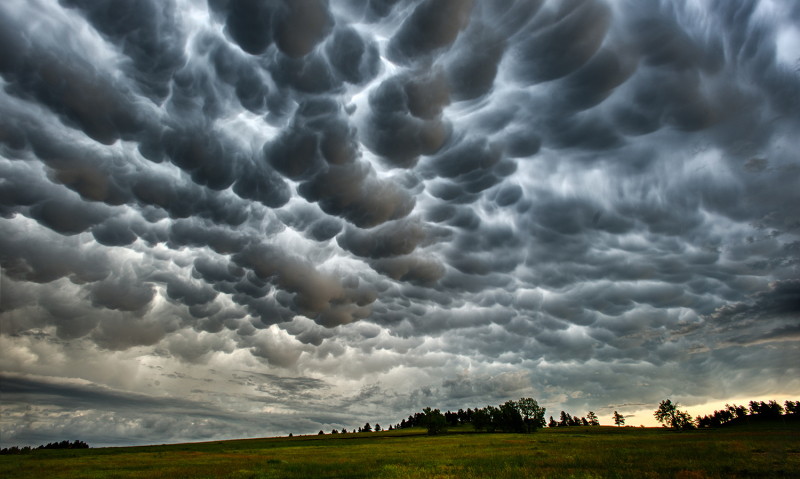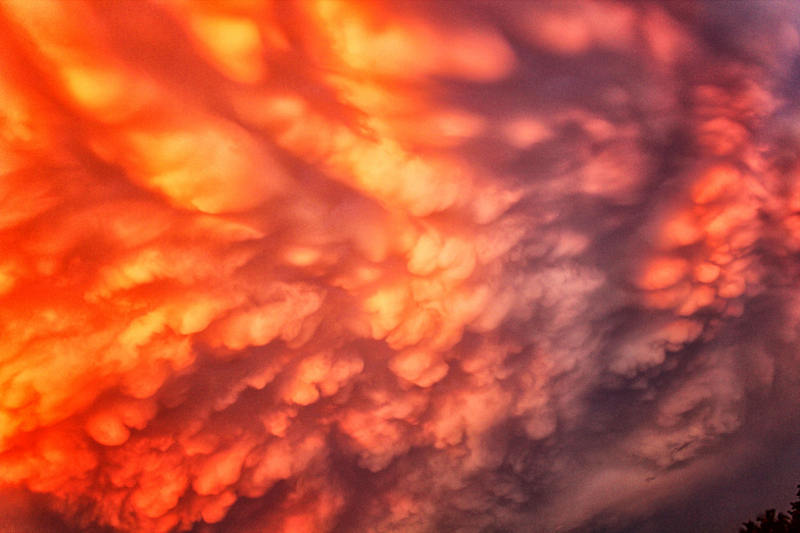Mammatus Clouds
Mammatus is a cellular pattern of pouches hanging beneath the base of a cloud, usually a cumulonimbus raincloud, but they can be linked to other types of parent clouds as well. According to the World Meteorological Organization's International Cloud Atlas, mamma is a cloud supplemental characteristic rather than a cloud genus, species, or variety. The prominent "lumpy" undersides are generated by cold air sinking down to form the pockets, as opposed to puffs of clouds rising from warm air convection. William Clement Ley described these formations for the first time in 1894.
Anvil clouds and violent thunderstorms are frequently connected with Mammatus. They are most commonly found in the foot of cumulonimbus clouds, although they can also be found in altostratus, cirrus, and volcanic ash clouds. Mammatus are often suggestive of a particularly intense storm when they occur in cumulonimbus. Aviators are strongly advised to avoid cumulonimbus with Mammatus because they signal convectively produced turbulence due to the intensely sheared atmosphere in which Mammatus form. Contrails can also form lobes, which are wrongly referred to as Mammatus.







